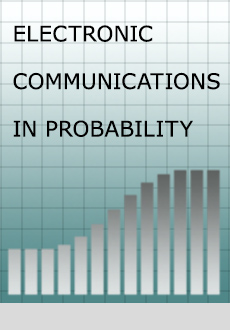Abstract
The Hammersley-Welsh bound (Quart. J. Math., 1962) states that the number $c_n$ of length $n$ self-avoiding walks on $\mathbb{Z} ^d$ satisfies \[ c_n \leq \exp \left [ O(n^{1/2}) \right ] \mu _c^n, \] where $\mu _c=\mu _c(d)$ is the connective constant of $\mathbb{Z} ^d$. While stronger estimates have subsequently been proven for $d\geq 3$, for $d=2$ this has remained the best rigorous, unconditional bound available. In this note, we give a new, simplified proof of this bound, which does not rely on the combinatorial analysis of unfolding. We also prove a small, non-quantitative improvement to the bound, namely \[ c_n \leq \exp \left [ o(n^{1/2})\right ] \mu _c^n. \] The improved bound is obtained as a corollary to the sub-ballisticity theorem of Duminil-Copin and Hammond (Commun. Math. Phys., 2013). We also show that any quantitative form of that theorem would yield a corresponding quantitative improvement to the Hammersley-Welsh bound.
Citation
Tom Hutchcroft. "The Hammersley-Welsh bound for self-avoiding walk revisited." Electron. Commun. Probab. 23 1 - 8, 2018. https://doi.org/10.1214/17-ECP94
Information





